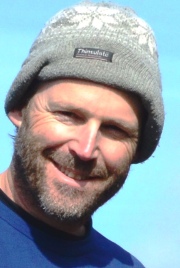World Wildlife Day: The impossible eagle
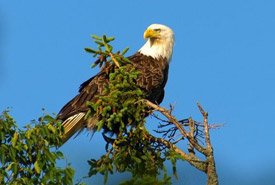
Bald eagle (Photo by Keith Mombour)
I have many memories of wildlife firsts. There’s a vivid memory of seeing my first white-tailed deer peering through the woods as I peered back through the school bus window. And I can still see the eyes of my first up-close encounter with a wolf the summer I was wandering around Kootenay National Park collecting plants.
But there is one wildlife first that I’m not sure about. Sometime in the early 1980s, I was reclining in our pool, looking up, and I was certain I saw a bald eagle. I can still replay an image of a white head and large wingspan in my memory. Excited, I ran and told my parents. They told me it was impossible.
My parents were probably right. They had never seen a bald eagle before. And back in the 1980s, bald eagles had been in trouble in southern Ontario and much of North America for a very long time.
Related content
I now see bald eagles all the time in southern Ontario. And I’m sure about it. I see them in Algonquin Park, Georgian Bay, Cambridge and Hamilton. It’s almost impossible to drive along coast of Lake Erie and not spot one. This winter, there have been two by our office in downtown Guelph. I’ve seen so many that don’t remember them all anymore.
Bald eagles are doing much better, but many other wildlife species are in trouble. Scientists now estimate that up to one million species may be at risk of extinction in the next few decades. Extinction and the loss of nature now rank up there with climate change as the biggest issues facing not just our environment, but our economy and our society.
But there is reason to be optimistic. Yes, officially there are 877 species that have gone extinct since 1500. There are many species that will go extinct without us even naming them. But even if we multiply this official number by a hundred, it still represents a relatively small fraction of the diversity of life on Earth today.
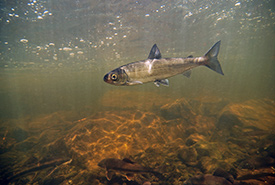
Atlantic whitefish (Photo by Bob Semple)
It's time to act, but how?
The age of mass extinction may be dawning, but there is still time to act. We still have a chance to save the critically endangered Atlantic whitefish in Nova Scotia, threatened turtles in Quebec and globally rare plants in BC’s Garry oak habitats. There has never been a time when nature conservation is so needed and can have such a lasting impact.
We know that conservation works. For many species, the solution is simple: we need to protect, restore and manage their habitats. This is probably the most effective way to curtail the extinction crisis. Look after the tall grass prairie in Manitoba and the prairie will look after hundreds of species, including western prairie white-fringed orchid and monarch. Conserve and restore the wetlands on Pelee Island, and the wetlands will help migrating shorebirds and endangered reptiles.
Habitat protection is efficient and provides many benefits to people, such as water security, carbon storage and providing nice places where you can go see western prairie white-fringed orchids and migrating shorebirds.
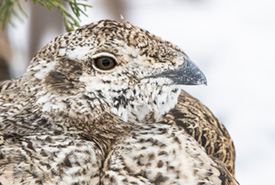
Greater sage-grouse (Photo by River Run Photography)
For some plants and animals, we’ll need the help of zoos and botanical gardens. Species such as greater sage-grouse are very rare. Captive breeding and relocations can help increase their numbers and establish new populations. These projects can be difficult and expensive but also very effective. In Canada, species ranging from whooping crane to sea otter to swift fox have all been helped this way. By increasing the number of individuals and the number of locations, their risk of extinction has been reduced.
There are other species on the road to rarity because of human activities — such as pollution, climate change or unsustainable harvesting — that are directly or indirectly reducing their numbers.
These can be challenging issues to solve, but we do have a track record of success. Over a century ago, birds such as wood duck and great blue heron were on the edge of extinction because of over-hunting. Today, they are abundant.
Saving species with multiple approaches
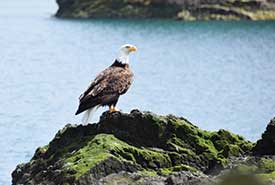
A bald eagle at the Kumdis estuary, Haida Gwaii, BC (Photo by NCC)
For the bald eagle, we needed many approaches. Like many birds of prey, bald eagle numbers were plummeting in the 1950s and 60s because of the pesticide DDT and indiscriminate shooting. Banning DDT and introducing laws and social values that mean we don’t shoot eagles anymore was not easy. But these actions were critical to their recovery in many places across North America.
We also moved eagles to new places to help them establish, and we protected the places where they nest. Between 1983 and 1985, the Canadian Wildlife Service released 16 young bald eagles at Long Point on Lake Erie to help restore the population, and other reintroductions occurred throughout their range.
It was a lot of work. But actions back then benefited eagles and people today.
Restoration in the coming decade
We are a generation with a great choice. We can continue to witness the loss of wildlife, or we can turn it around. We can all chose to be active participants in the upcoming UN Decade on Ecosystem Restoration and the Abu Dhabi Call for Global Species Conservation Action, both of which aim to prevent human-driven extinctions by 2030.
We have proven that humans can be agents of extinction, but we can also represent recovery. I don’t know about the rest of world, but Canada could stop all extinction and species loss from our own borders. We could be the first nation where no more species get left behind.
We generally know which species are at the greatest risk. The Committee on the Status of Endangered Wildlife in Canada assesses new species every year. Provincial and territorial Conservation Data Centres track the status of almost 30,000 species, and World Wildlife Fund reports on wildlife population trends. We can all protect habitat by supporting the Nature Conservancy of Canada and Ducks Unlimited Canada and match funding that is available through the Natural Heritage Conservation Program.
There is still an opportunity. We know what works: reduce threats, protect, connect and restore habitats and be bold in our efforts to reintroduce species to places where they have been lost.
We need to roll up our sleeves. There are a million species waiting for us to save them, and it's not impossible.

